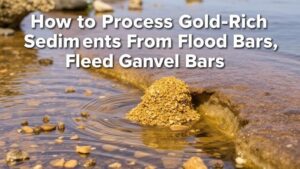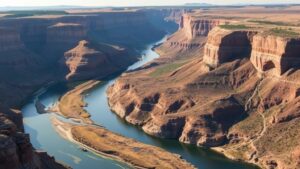How the Nome Gold Rush Used Beach Mining to Recover Fine Gold
The Nome Gold Rush: Beach Mining and Fine Gold Recovery
The Nome Gold Rush of the late 19th century marked a pivotal moment in the history of gold mining in the United States. Located in western Alaska, Nome attracted thousands of prospectors and fortune-seekers drawn by the promise of gold. Beach mining, in particular, became a prevalent method for recovering fine gold from the shorelines of the Bering Sea. This article explores the techniques, challenges, and successes of beach mining during the Nome Gold Rush.
The Rise of the Nome Gold Rush
The Nome Gold Rush began in 1898 when gold was discovered along the beaches and riverbanks of Nome and its surrounding areas. The gold was not found in the traditional deposits of hard rock but rather as fine grains or nuggets washed ashore. This led many to venture into the field with minimal gear, as the waters of the Bering Sea had eroded larger gold deposits, making fine gold extraction from sands and gravel feasible.
Beach mining involved several techniques specifically designed to recover fine gold. process can be broken down into the following stages:
- Sample Digging: Miners would initially dig test holes along the beach to determine the concentration of gold in the sand and gravel.
- Washing and Sifting: After collecting sands, miners would use tools like sluice boxes and rocker boxes to wash the material. Water would help separate lighter materials from denser gold particles.
- Magnetite Separation: Due to the presence of heavy minerals like magnetite, miners often used magnets to remove these distractions, allowing more efficient recovery of gold.
Challenges Faced in Beach Mining
The beach mining process was not without its challenges. Prospectors had to contend with environmental and logistical hurdles, including:
- Weather Conditions: Nome’s harsh weather, characterized by freezing temperatures and violent storms, made it difficult to operate machinery and conduct mining activities.
- Competition: As the rush progressed, claims were often staked in densely populated areas, leading to disputes among miners and necessitating the need for a system to establish rights to specific mining locations.
- Resource Limitations: Many miners operated with limited resources, which impacted their ability to invest in more efficient mining technologies and processes.
Success Stories and Gold Recovery Rates
Despite the challenges, many prospectors found success through beach mining. Historical records indicate that approximately $10 million worth of gold was extracted from Nomes beaches within the first year of the rush. Fine gold extraction became increasingly crucial as traditional mining methods yielded diminishing returns.
For example, George E. Duras, a well-known beach miner, reportedly recovered a significant amount of fine gold using a combination of shallow-water dredging and beach mining techniques. His success illustrated the potential profitability of focused mining in areas previously overlooked by large-scale operations.
Real-World Applications: Modern Beach Mining
Today, beach mining techniques have evolved, leveraging modern technology and more sophisticated methodologies. Contemporary beach miners might use advanced equipment such as suction dredges and high banker systems to enhance recovery rates and efficiency. Similar principles remain effective, with fine gold still residing within deposits along various shorelines worldwide.
Conclusion: Lessons from Nomes Beach Mining
The Nome Gold Rush serves as a fascinating case study in the history of mining, demonstrating innovative ways to recover fine gold through beach mining techniques. Insights gleaned from this period highlight the adaptability of miners in addressing environmental challenges, leveraging limited resources, and implementing strategic methods to secure their fortunes.
As the mining industry continues to evolve, the practices of the past, exemplified by the Nome Gold Rush, can inspire modern miners and enterprises looking to optimize their methods for gold recovery. Understanding these historical strategies enriches our appreciation of mining history and informs current practices in resource extraction.


